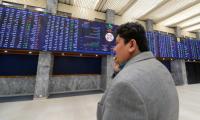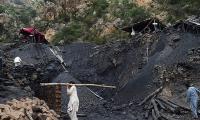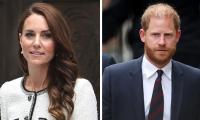ISLAMABAD: The net profits admitted in the JIT report and taxes deposited into the national kitty by the Sharif family businesses in early nineties raise a serious question about the basic ground taken by the accountability court in its July 6 verdict that Nawaz Sharif couldn’t give an account of the resources to purchase the London flats and was thus convicted under Section 9(a)(v) of the NAB Ordinance (NAO).
Nawaz Sharif denies ever purchasing these flats and submitted that these belong to his father’s foreign investment and came in ownership of his son Hussain Nawaz in 2006. However, the facts and figures present on record challenge the basic ground taken by the accountability court while convicting three times prime minister Nawaz Sharif and his daughter Maryam Nawaz.
The maximum value of London flats in the years they were purchased (according the accountability court judgement) was 100 million in Pakistani rupees whereas the taxes deposited into the national kitty by only two business units of the Sharif family in the corresponding tax years were Rs1.47 billion and that too excluding the sales taxes figures.
If sales tax figures are also included, only these two business units - Chaudhry Sugar Mills and Ramzan Sugar Mills - have paid total taxes of Rs10.345 billion until now. Even the calculations of the year-wise equity, total liability and net profit as given in the JIT reports tell a different story.
These figures given in the JIT report the have been termed by the Sharif family wrong, baseless and like comparing apples with oranges. But, even according to these figures admitted by the JIT, only these two business units made a net profit of Rs312 million in 1995 and 420 million in 1996. The profits from other business are in addition to this.
The accountability court in its verdict simply forgot or ignored even mentioning the price at which these flats were purchased in early nineties while convicting Nawaz Sharif ‘for purchasing’ these very flats in those years.
The phrase ‘London Flats’ was considered sufficient to give an idea to the people about the value of the flats. The judgement hasn’t discussed the money trail of London flats in terms of movement of money or the declarations made by the members of the Sharif family or their businesses in those years but simply held without discussing any evidence that Nawaz Sharif was the real owner of these flats and that he couldn’t give account of the resources used to purchase these flats.
Had the judgement discussed the movement of money from Pakistan to the UK or from some other country to the UK, the discussion would have been different and charges of money laundering could have been leveled if the prosecution had succeeded in presenting some evidence after thorough investigations.
However, this was not the case and the verdict was based merely on the ground that Nawaz Sharif didn’t have that much money to purchase flats. Nawaz Sharif denies purchasing flats but the worth of businesses show that resources were not an issue.
The profits made by only these two business units of Sharif family and taxes deposited into the national exchequer by them in the corresponding years (from 1992 to 1997) raise serious questions about the court declaration that Nawaz Sharif didn’t have the resources.
However, Nawaz hasn’t admitted the ownership of flats. As all the prosecution witnesses themselves admitted during the cross-examination that they never got any evidence whatsoever that Nawaz Sharif was or ever was the owner of Avenfield flats, so the counsel for Nawaz maintained that even the charge was not established.
Nawaz Sharif’s lawyer submitted that Nawaz never owned the London flats and were acquired by Mian Muhammad Sharif as a result of his investment in 1980 and they became an ownership of Hussain Nawaz in 2006 as the result of distribution of property.
The accountability court verdict simply ignored the principles laid down by a three-member bench of the Supreme Court in a judgement authored by Justice Asif Saeed Khosa which held that for conviction under Section 9(a)(v) of the NAB Ordinance, the prosecution had to prove through undeniable evidence that which resources (corruption or plundered money) were used to purchase property in question.
The verdict of the accountability court instead admitted that no corruption or dishonesty charge was proved and even declared that it was hard to establish even the exact ownership of the flat.
According to the pleas admitted by the Supreme Court in the Hanif Abbasi Vs Imran Khan case, a Pakistani citizen was not bound to declare his foreign properties in Pakistan before promulgation of Income Tax Ordinance 2001.
It was submitted by Imran Khan that this was the reason that he hadn’t declared his offshore company and London flat in Pakistan before 2001. In case of Mian Muhammad Sharif, he was not a tax resident of Pakistan after 2001 till his death because of the 4th martial law.
Sharif family admits using flats since 1993 before acquiring its ownership in 2006 and their possession of flats had never been a secret and different members of the Pakistani community, including top politicians, used to visit members of the Sharif family in the Avenfield House flats in 1990s and especially in 2000s when the family was in exile.
Without proving that an asset was acquired by an accused person, he/she could not be asked to provide the money trail. In present case, it is maintained that the London flats were acquired by Mian Muhammad Sharif who undisputedly was a wealthy businessman and could have purchased more flats than these given his known sources of income.
The transfer of property from the grandfather to the grandchildren without being transferred to the father is a routine matter in our society.
Questions could have arisen had Mian Muhammad Sharif been an unknown poor man and Nawaz Sharif’s holding a public office could have been the only source of income for the family.
However, the accountability court verdict has held without any reasoning that none other than Nawaz Sharif, being the father of the children, could be the real owner of the flats. According to the UK land registry department, these four flats were purchased by offshore companies Neilsen and Nescoll in the following dates; Flat-17: Nescoll owner since June 1, 1993, Flat-16: Nielsen owner since July 31, 1995, Flat-16A: Nielsen owner since July 31, 1995, Flat-17A: Nescoll owner since July 23, 1996.
According to the exchange rate figures, the British Pound to Pak Rupee exchange in June 1993 was around Rs42, in July 1995 about Rs51 and in July 1996 about Rs55.
According to the details of the property purchases, Flat-17 was purchased for 585,000 pounds (Rs24,570,000), Flat No-16 and 16A (treated as one flat) for 1.075 million Pounds (Rs54,825,000) and Flat No-17A for 245,000 pounds (Rs13,475,000).
When different persons associated with the property business in London were asked for the maximum market values of these flats in the years 1993 – 1996, they said it could not be more than 2 million British Pounds in any case at that time.
Though the Sharif family denies purchasing these flats in early 1990s and there is no evidence on record to deny this statement, the accountability court declares that flats were purchased in early 1990s andthat too by Nawaz Sharif who could not give account of resources to purchase these flats.
Whoever bought these flats in the years 1993 – 1996, the total money spent in GBP was 19,05,000 Pounds which was Rs92,870,000 in rupees. Even the JIT report, on basis of its calculations disputed by Sharif family, showed that only business of Sharif family, Chaudhry Sugar Mills, earned Rs160 million profit in the year 1995 and Rs134.01 million in the year 1995.
A profit of 67 million was earned in 1990, 31 million in 1991, 26 million in 1992, 5 million in 1993, 25 million in 1994 and 31 million in 1995 by another business, Ittefaq Sugar Mills, as per disputed calculations of the JIT.
According to these JIT calculations, only Ittefaq Textile Mills made a net profit of 176 million in 1991 and 190 million in 1992. For the Ramzan Sugar Mills, even the calculations of the JIT show a net profit of Rs152 million was made in the year 1995 and Rs286 million in 1996.
Keeping aside these profits admitted by the JIT, the tax record shows that only two business concerns of Sharif family, Chaudhary Sugar Mills and Ramzan Sugar Mills deposited taxes of Rs1,473,765,551 (Rs1.47 billion) in the corresponding years discussed by the accountability court judgment only in respect of excise duty and income tax (sales tax not included).
Chaudhry Sugar Mills deposited Rs90,320,654 in 1993, Rs179,507,378 in 1994, Rs200,973,923 in 1995, Rs125,745,740 in 1996 and Rs101,231,603 in 1997 into the national exchequer.
It thus deposited a total of Rs697,779,298 in only these few years when according to the JIT these flats were purchased. The Ramzan Sugar Mills deposited Rs89,079,609 in 1992, Rs130,843,648 in 1993, Rs154,313,426 in 1994, Rs177,350,462 in 1995, Rs139,512,877 in 1996 and Rs84,886,231 in 1997.
The taxes deposited by the other businesses of the Sharif family like Hamza Board Mills Limited, Hudabiya Engineering, Mehran Ramzan Textile Mills etc are in addition to these figures.
KP govt says legislation was misunderstood and insists it is designed to curb illegal mining and attract investment
Pakistan has so far received total disbursement of loans to tune of $6 billion from international lenders
Loads of US-origin weapons have been seized from militants in Pakistan and confirmed by Pentagon as former US property
Senator Saifullah Abro expressed serious reservations over non-provision of required details for repeated times
As gesture of goodwill, CJP presented souvenirs to both ambassadors who reciprocated with mementos of their own
Over 22,600 houses are in their final stages of completion under "Apni Chhat, Apna Ghar" programme







